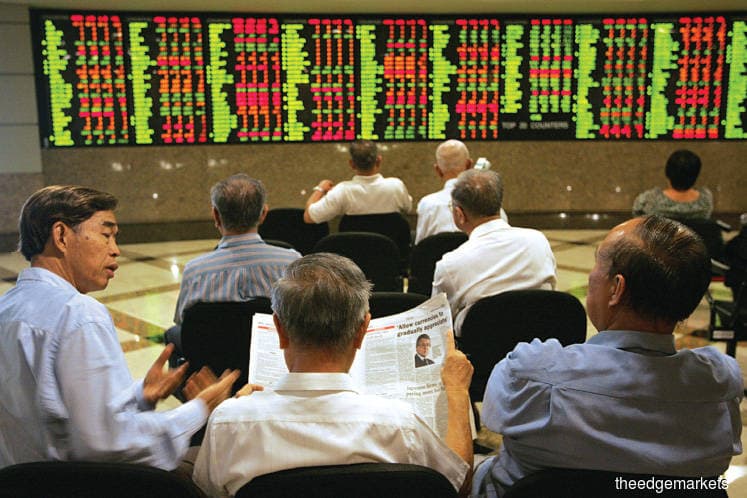
This article first appeared in The Edge Malaysia Weekly on February 12, 2018 - February 18, 2018
YOUNG investors are just not interested in trading stocks these days, but who can fault them?
The main goal of investing is to make money, and there are plenty of attractive alternatives to the stock market. Cryptocurrency, property and small businesses are just a few examples.
Based on the latest figures from Bursa Malaysia, retailers only accounted for 14.6% of the value traded last month. For perspective, the Stock Exchange of Thailand sees between 40% and 45% of its trading participation by value coming from retailers.
Meanwhile, Bursa has been seeing a decline in new CDS accounts over the years. In 2016, only 112,572 new CDS accounts were opened, bringing the total to 2.5 million. In contrast, 207,393 new accounts were opened in 2012.
It could be argued that the institutionalisation of the stock market has made it rather boring for investors.
In contrast, speculating in cryptocurrencies certainly is not for the faint of heart. Despite the risks, the potential upside can’t be disputed. At its record high of US$19,343.04 a coin, bitcoin had increased more than 20 times in value.
Even after the recent correction, the coin is still more than eight times higher than what it was a year ago.
The extremely high volatility of cryptocurrencies means that speculators can make (or lose) huge amounts of money in a relatively short period of time, something the stock market, at least the local one, is not able to offer.
Even if there are stocks that trade with high volatility, liquidity tends to dry up very quickly as well. Just take the meteoric rise in the share price of Iskandar Waterfront Holdings Bhd, which was up almost 260% at its peak. But when the group lost the Bandar Malaysia project, its share price crashed and liquidity all but evaporated. As a result, many speculators in the stock ended up trapped, unable to unwind their positions.
No one knows what the future of cryptocurrencies will be, particularly after the recent sharp decline, but to current investors, this new alternative investment has shown at least that there is ample liquidity due to the fact that the digital asset is traded globally. Speculators may still incur losses, but at least there is generally an avenue to exit.
That said, cryptocurrencies are still relatively small — as far as Malaysians are concerned anyway.
Regulators estimate that a mere RM70 million to RM80 million is ploughed into cryptocurrencies each month. While this may have the potential to almost top RM1 billion a year, it is minuscule compared with the RM9.8 billion worth of stocks retail investors traded on Bursa in January alone.
Another asset class that has been dominating headlines has been property. Since 2009, the House Price Index has risen from 94.8 to 187.6 as at the third quarter of 2017. That represents a 92.8% increase in the nine-year period post-global financial crisis (GFC).
That works out to a compound annual growth rate (CAGR) of 7.88%.
To be fair, the stock market has performed rather admirably in the same period, recovering from post-GFC lows. From 2009 to 2017, the FBM KLCI gained 107.16% while the FBM Small Cap Index rose 160.21% — a CAGR of 8.43% and 11.21% respectively.
However, the depressed valuations during the GFC skew the numbers. Looking back 10 years, the FBM KLCI is only up 24.34% while the FBM Small Cap Index has gained 41.5%. This translates into a measly CAGR of 2.45% and 3.93% respectively.
Of course, investors generally will not go long on stocks for 10 years without taking profit. But those looking for stable returns may find a better safe haven in property than in stocks — the former being relatively unaffected by the GFC.
At the same time, leverage makes the gains on property investments nothing to scoff at.
Banks may finance up to 90% of the value of a property, and the introduction of developer interest bearing schemes further reduced buyers’ need for capital outlay. Even at the 70% loan-to-value cap imposed by Bank Negara Malaysia on the third property purchased, property buyers are still able to enjoy most of the benefits of leverage.
It also helped that interest rates have remained relatively low over the past decade, further building the case for investors to plough capital into actual properties as opposed to property stocks, for example. Margin financing is far more expensive in contrast.
For the purpose of illustration, a 70:30 debt to equity on a property will boost the 7.88% CAGR to roughly a 15.75% return per annum, taking into account interest of 4.55%.
Last but not least, the wave of young entrepreneurship that has mushroomed over the past decade cannot be discounted. Whether it is investing in start-ups or new cafés, investors are spoilt for choice these days. From equity crowd-funding platforms to kickstarters, there are more and more ways for people to invest directly in smaller businesses.
Certainly there are bigger risks, but the appeal of seeding a new business would strike a chord with the younger generation who may not have the same appreciation for large corporates.
And if investment money is going into these alternatives, there is simply less available to flow into the stock market.
Two decades ago, many investors ditched their CDS accounts after being burnt by the 1997 Asian financial crisis, preferring instead to go for unit trust funds.
Then at least, the money ultimately found its way back to Bursa. Today, the competition is taking money away from the bourse.
Save by subscribing to us for your print and/or digital copy.
P/S: The Edge is also available on Apple's AppStore and Androids' Google Play.